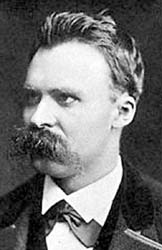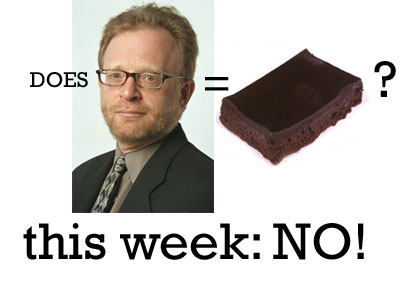Brian Leiter quibbles over the New York Times‘ decision to run a lengthy review by William T. Vollmann on the new Curtis Cate biography of Frederich Nietzsche. Mr. Leiter, who apparently is a professor of philosophy, suggests that Vollmann has no expertise in the subject and displays none in his review.
I think Leiter is confusing the act of reviewing a biography (which does, after all, concern itself with a subject and his personal details first) with the act of summing up a man’s philosophy. Aside from Leiter subscribing to the traditional “credentialed” nonsense that often comes from bitter academics (perhaps because, while Leiter remains institutionalized and apparently quite miserable — in Texas, no less — Vollmann is busy turning out endless volumes of books, including a seven-volume treatise on violence), he concerns himself with Vollmann’s alleged failure to discuss Nietzsche’s philosophical ideas.
 Leiter suggests that Vollmann “bizarrely ascribes” a “realism” to Nietzsche and suggests that Nietzsche does not hold the view that “cruelty is innate,” complaining that Vollmann fails to cite a specific passage. I’m fairly certain that Vollmann was suggesting one of Nietzsche’s most infamous statements from Thus Spake Zarathrusta, something that a certain Austrian perhaps took too much to heart: “Man is the cruelest animal. Whatever is most evil in his best power and the hardest stone for the highest creator.” Far from a “People magazine speculation,” Vollmann is willing to give the NYTBR readership the benefit of the doubt, presuming that they are familiar with Nietzsche’s basics. Further, Vollmann framed the “realism” within quotes, leaving little question to the reader that this was a speculation on Nietzsche’s capacity to tell the truth about the human race. This commonality, of course, what separates Vollmann’s work from many of his contemporaries on both the fiction and the nonfiction fronts.
Leiter suggests that Vollmann “bizarrely ascribes” a “realism” to Nietzsche and suggests that Nietzsche does not hold the view that “cruelty is innate,” complaining that Vollmann fails to cite a specific passage. I’m fairly certain that Vollmann was suggesting one of Nietzsche’s most infamous statements from Thus Spake Zarathrusta, something that a certain Austrian perhaps took too much to heart: “Man is the cruelest animal. Whatever is most evil in his best power and the hardest stone for the highest creator.” Far from a “People magazine speculation,” Vollmann is willing to give the NYTBR readership the benefit of the doubt, presuming that they are familiar with Nietzsche’s basics. Further, Vollmann framed the “realism” within quotes, leaving little question to the reader that this was a speculation on Nietzsche’s capacity to tell the truth about the human race. This commonality, of course, what separates Vollmann’s work from many of his contemporaries on both the fiction and the nonfiction fronts.
Leiter suggests that Aristotle’s influence was “notable for his almost total absence from the corpus” and then deflates his argument by pointing to a few examples. I would argue that to dwell into the exact nature and percentage of Aristotle’s influence upon Nietzsche is to not only quibble over pedantics (something that more properly serves the purpose of academic journals, with their reams of paper quibbling over singular passages), but to ignore the realities of editing and publishing a major newspaper that is designed, after all, for mass consumption.
Leiter then offers a cheap shot, suggesting that Vollmann’s stroke has impaired his abilities to think. He then continues on this Aristotle tangent. However, I will agree with Leiter about his nitpicking concerning “individual Jews,” even though his own observation is largely a red herring.
Mr. Leiter’s post is more blustery than helpful and is about as uninviting as it gets. Personally I’m just a guy who knows a little more than the basics about Frederich N. and I’m sure Leiter certainly knows much more than I do about philosophy. But if Leiter seriously believes that the New York Times Book Review is intended to be serious and intellectual, then he clearly hasn’t followed its decline since the Bill Keller pledge to go more commercial from early 2004 and is similarly “uncredentialed” to weigh in. I also sincerely doubt nepotism factored into Sam Tanenhaus’s decision to hire Vollmann. Vollmann has always existed on an uncompromising edge, daring to write about issues that most novelists and journalists keep their heads in the sand about, and has faced a certain stigma enforced by folks too flustered to hear the truth.
While I agree to some extent with Leiter’s cri de coeur for intellectualism, his arrows here are misplaced. A biography is not a philosophical text, nor necessarily a response to philosophy. It tells us about a man and his details, yes. But it is not necessarily concerned with philosphy — although, it is helpful to the scholar wanting to find additional (if tertiary) context.


